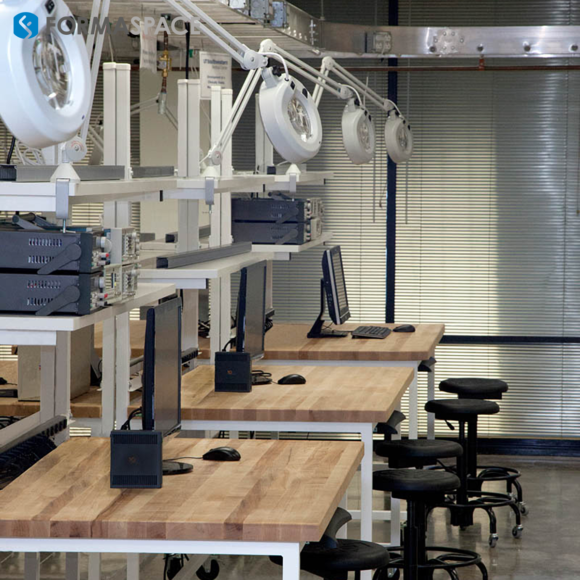Sales of Color Dyes and Pigments Total Nearly $40 Billion Annually
The fascination with color dates back millennia – and today, it’s also big business, with sales of dyes and pigments reaching an estimated $38.2 billion in 2022.
What makes the color industry so interesting is that it exists at the intersection of art and science.
On the one hand, color can help us make instant life or death decisions – such as helping us identify and avoid poisonous animals or plant life, providing protective camouflage in wartime, instructing us to stop at intersections, or calling out the location of safety measures, such emergency exits or fire extinguishers.
On the other hand, color also enables human artistic expression and status, dating back to the pre-historic black charcoal and red ochre pigment cave drawings, the discovery of Tyrian royal purple by the Phoenicians (a natural dye created by the back-breaking processing of tens of thousands of murex sea snails) and the colorfully painted surfaces of later classic Greek and Roman statuary (which in their day bore what we would now consider quite gaudy colors).
Today, product planners and marketers leverage color fashion trends (such as the annual Pantone Color of the Year) to help influence consumer purchasing behavior.
As a result, there continues to be significant investment in laboratory research within the life science and chemical coatings sectors to find, develop, and commercialize innovative new color products and materials.

In this Formaspace laboratory report, we will look at some of these recent discoveries.
Laboratory Researchers May Have Uncovered the Reason Why Hair Turns Gray as We Age
A big chunk of the color industry research dollars is directed toward the development of hair coloring products that eliminate gray and restore the illusive hair color of youth – analysts estimate that this hair dye market was valued at over $17 billion in 2021.
Why does our hair tend to turn gray as we age?
Researchers at NYU Langone Health may have discovered the answer by studying pigmentation in mice and human skin.
They believe the root cause (pardon the pun) of hair turning gray may be due to a traffic jam of melanocyte stem cells (McSCs) that get bunched up in our hair follicles as we age, causing them to block naturally occurring hair color pigments.
McSCs normally move back and forth between the different pockets of the developing hair follicles, where they receive a signal from WNT proteins to turn into pigment cells. However, as we age, the researchers believe the McSC stem cells become trapped, unable to leave the “hair follicle bulge.”
If the researchers are correct, the next important step would be to identify a way to “unlock” these MsSC stem cells, which could help restore new hair growth to its original color.

Creating Materials that Mimic the Changing Colors Founding Nature
Researchers are also inspired by other color phenomena found in nature, such as the ability of certain species, such as chameleons, octopus, and squid, to change color.
One of the most innovative companies in this field is the E Ink Corporation (founded by MIT graduates in the late 1990s), which developed the concept of low-power, paper-like displays that are now commonly found in devices such as Amazon Kindles.
Put simply, the E Ink concept uses small electrical charges to move pigments within a viscous oil substrate to create color patterns in the form of recognizable letters.
More recently, E Ink partnered with BMW to create a much larger-scale implementation of their pigment-changing technology. BMW launched the first iteration of this idea at the 2022 CES show in Las Vegas, where it demonstrated how its electric IX Flow vehicle could change its exterior color from black to white and then back again at the touch of a button.

This year at the 2023 CES show, BMW pulled off something even more spectacular – a vehicle that can shift between 32 different colors, including varied colors on the body (such as racing stripes) or color effects on the wheels.
To achieve this, BMW implemented E Ink’s latest four-color (CMYK) technology, dubbed Prism 3, to create 240 individual color-changing printed plastic panels that were painstakingly wrapped around the body of BMW’s I Vision Dee show car.
Of course, this is just a demonstration. In reality, the plastic panels are too fragile for a real-world production vehicle. But, according to the BMW engineer Stella Clarke who is managing the project, they are hoping that a future version of the color-changing technology could be implemented using a flexible spray coating.
Nature Teaches us that Pigments are not the Only Way to Create Color

Most people with a basic high school science background understand that pigments create color by selectively absorbing different parts of the visible light spectrum – e.g. white pigment reflects the entire spectrum of light waves back into our eyes; black pigment absorbs all light waves making objects appear dark, while individual colors pigments, such as cyan or yellow, create individual colors by absorbing all the light waves except those of their color namesake.
In the color pigment and dye industry, this is known as subtractive CMYK color space because different combinations of cyan, magenta, yellow, and black pigments or dyes can absorb (or subtract) different wavelengths to recreate most (but not all) the colors found in nature.
But there are other ways to create color.
For example, fireflies that glow at night or excited plankton that effervesce in shallow bays create color by emitting different wavelengths of light. Collectively, these fall under the designation of additive RGB color space, where different wavelengths of red, green, and blue light combine to create the sensation of color. It’s the same principle as used by display monitors – so if you are reading this on a computer or smartphone, the emitted RBG light combines to create the image you see. (However, this is not the case on a Kindle electronic paper display; that uses subtractive color pigments.)
Understanding the Underlying Mechanisms of Structural Color
But we are still overlooking some of the most brilliant colors in nature… for example, the brilliant shimmering iridescent blue wings of giant Morpho butterflies.
To us, the shimmering Morpho butterfly wings appear to be brilliant blue – but, in reality, many blue creatures in nature (including Morpho butterflies) don’t rely on blue color pigments at all. (And, as it turns out, blue pigment is relatively rare in nature.)
So why do we perceive them as blue?
The answer is Morpho butterflies use a different mechanism, known as “structural color,” to create what we perceive as shimmering iridescent blue wings.
Researchers such as Andrew Parker, an English researcher, inventor and artist at the University of Oxford’s Biomimicry Laboratory, and Kate Nichols of Lawrence Berkeley National Laboratory have been studying this phenomenon of structural color, which takes place at the microscopic level.
Unlike color derived from pigments that reflect or absorb different wavelengths of light, structural color is created by highly reflective microscopic cellulose structures studded with individual helical structures (helicoids) that can only be seen with an electron microscope.
A bit of physics trickery is involved here: to create the perception of blue color, these individual helicoids are spaced apart at a distance that corresponds to the wavelength of blue light – the result is blue light hitting the material gets reflected in our eye, while other colors of light pass through or are canceled out entirely (think of standing waves from physics class).
Some species of plant and animals can also perform an additional structural color party trick – adding a circular polarization to the reflected light (either right-handed or left-handed), which scientists believe can help attract species such as birds and pollinating bees to shiny, iridescent fruits and flowers.
Important New Industrial and Product Design Applications for Structural Color
What are some of the applications of using microscopic structures to manipulate color?

This is exactly the question that lab researchers in this field, now known as “natural photonics,” are addressing.
Several recent developments, including a new paper from Richard Parker published in Nature, have caught our eye.
· Ultra White Films and Coatings
White paint is traditionally manufactured using a metal-derived pigment made from titanium dioxide, but it is both expensive and potentially hazardous to the environment and human health. Researchers at Purdue University’s Birck Nanotechnology Center recently published a paper on the potential for using non-metallic Barium sulfate (BaS04) nanoparticles to create ultra-white films and paint coatings – an ideal solution for reducing the cost of cooling buildings by creating highly reflective roof surfaces.
· The Blackest Black Material
Researchers at MIT discovered a new ultra-black material when they were experimenting with growing vertically aligned carbon nanotubes (CNTs) on an aluminum substrate. While creating a new blacker-than-black material was not their original goal, the MIT researchers are happy with the serendipitous discovery: they claim the new material can capture at least 99.995% of incoming light – from any angle, making it at least 10 times “blacker” than the previous record holder, Vantablack. Engineers in aerospace are intrigued by the new material; one possible application idea is shielding space telescopes from ambient light.
· New Flexible Irridescent Materials that Change Color under Pressure or When Stretched
Another team of researchers at MIT has published a paper on how to apply structural color principles to create unique iridescent materials which can change their colors as they are stretched.
The team has identified a process to produce large-size structurally colored sheets using an emulsion-based color photography technique first developed back in the late 1800s.
One of the unique properties of this new material is that it changes color when you apply pressure and stretch the material.
The changing color under tension or pressure could lead to some interesting applications. For example, medical professionals could verify if bandages or splints are applied properly –not too tight and not too loose – by observing the color. Similarly, industrial robots could use optical “eyes” to calibrate how tightly robotic fingers are pressing or squeezing an object.
· More Environmentally-Friendly Glitter
Let’s close out with one more application of structural color-based materials.
This one may seem to be a little bit frivolous, but Professor Silvia Vignolini’s team at the University of Cambridge has published a paper in Nature Materials outlining a new method to manufacture glitter using structural color, which avoids the use of microplastics, which have become a widespread environmental hazard in our waterways that threatens the entire food chain.
Unlike traditional glitter made from mineral-based pigments – which requires a hugely energy-intensive bonding process within 800-degree Celcius ovens – the new method uses a plant-based, cellulose material substrate to create the structural color opalescent film, which is then chopped up into small grains of non-toxic, biodegradable glitter material.

Formaspace is Your Laboratory Research Partner
If you can imagine it, we can build it, here at our Formaspace factory headquarters in Austin, Texas.
Take a moment to contact your Formaspace Design Consultant today. They can provide you with expert advice and recommendations to make your next laboratory construction or remodeling project a complete success.











